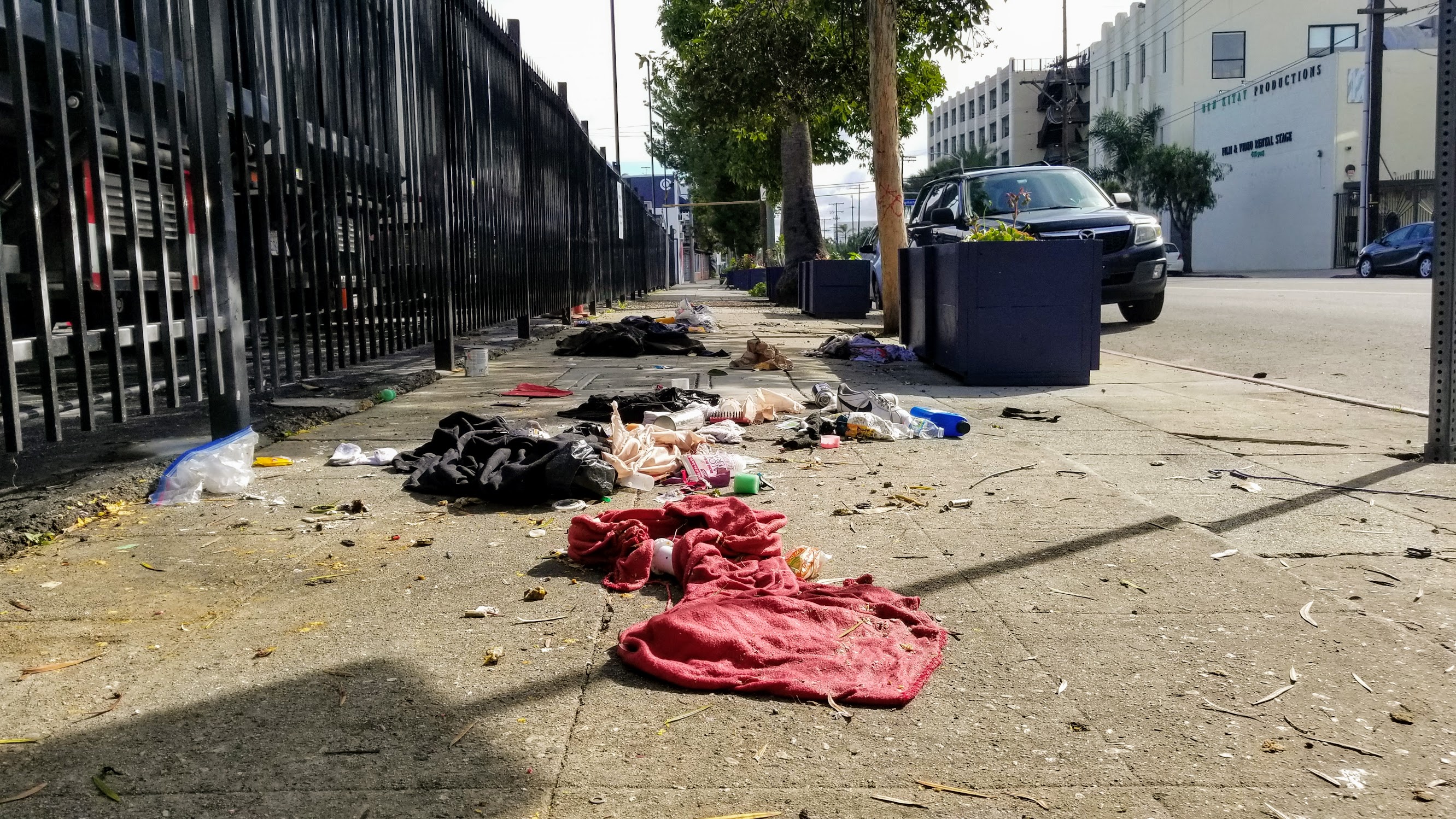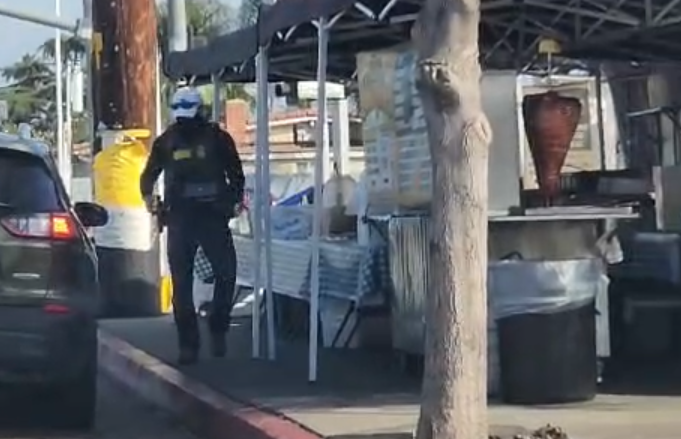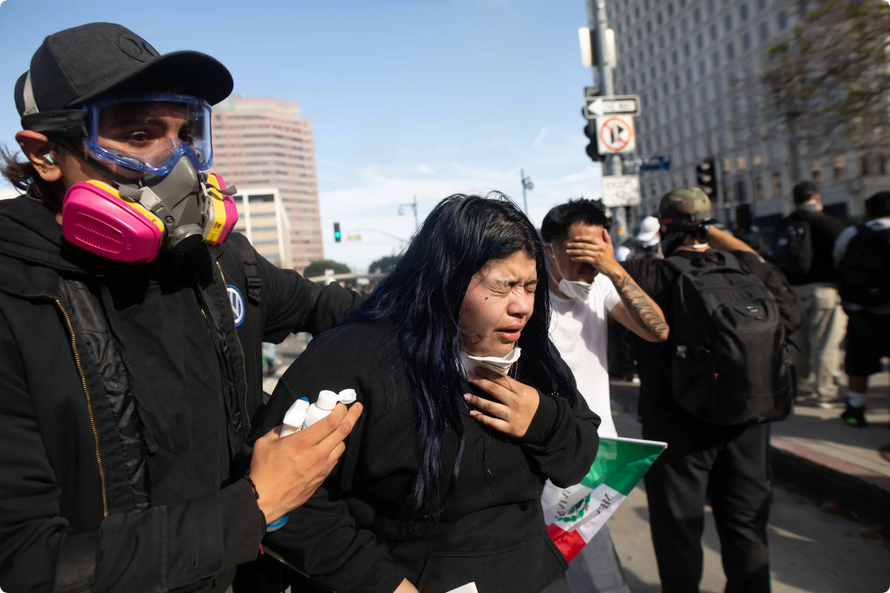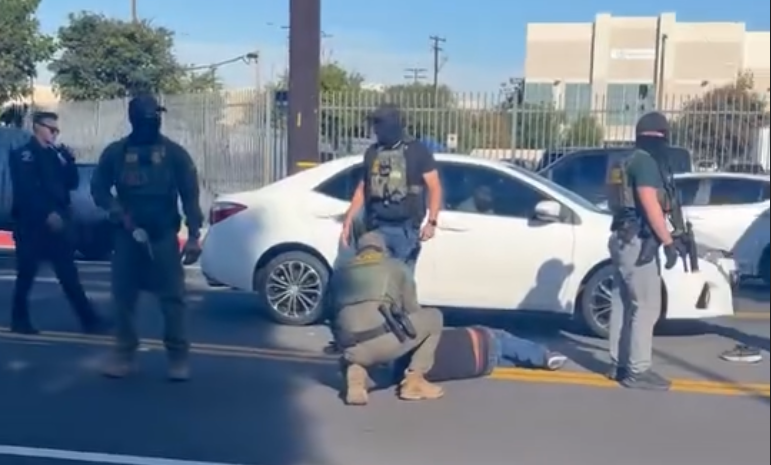[dropcap size=big]T[/dropcap]hey’re being called “anti-homeless planters,” and I bet you’ve seen them. These are planters normally intended for a patio or home garden, but have become the latest tool used to displace the homeless in neighborhoods across Los Angeles.
They are all over Hollywood. On Cahuenga, planters line the perimeter of Quixote Trucks like a moat to a castle. The planters are popping up on Lillian Way in East Hollywood between Santa Monica and Melrose. There, the rental houses, photo studios, production companies, and “luxury” apartments have sought to prevent encampments from settling the sidewalks.
Communities in Los Angeles have questioned the legitimacy of these planters for years but not everybody sees them as an anti-homeless tool. Now, a chain of emails provides some insight as to how they are being used as just that by Hollywood studios and other property owners in the area.
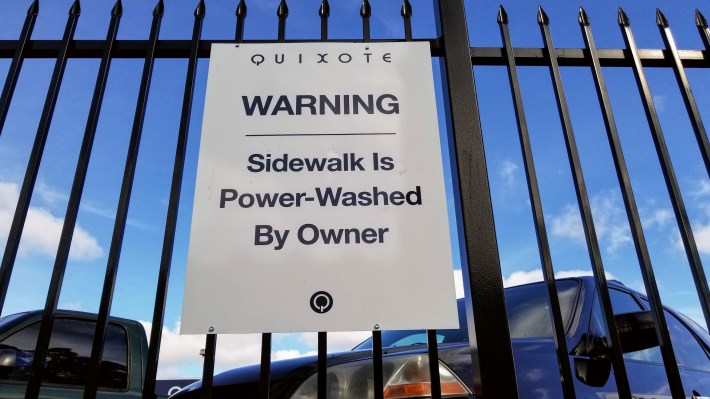
Recently publicized emails between property owners and the LAPD, illustrate the lengths landlords are willing to go to displace the homeless, and the ways in which law enforcement is complicit.
“This issue is too sensitive to discuss over email,” wrote Eddie Guerra, a senior LAPD officer, on August 28, 2018. “Unfortunately we are in the displacement business,” Guerra admits in another email.
The email chain spans several months and also involve property managers, executives at some of the top brokers in Hollywood, and city officials. They illustrate a coordinated effort to displace the homeless and limit services that they think make it easier for them to live on the streets.
“Over the past three years, power washing has been the only solution we have found to have any effect at all,” wrote Mr. Riley of Strz Enterprises, a self described music entertainment company and creative studio, in an email.
“I personally don’t [feel] pressure washing helps and it hasn’t worked in other areas,” officer Guerra responds.
RELATED: Crimes Against the Homeless, Use of Force by Police Rose Last Quarter
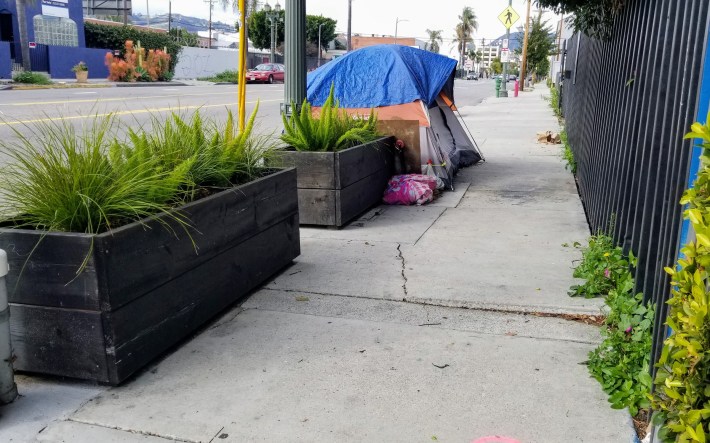
[dropcap size=big]L[/dropcap]ast month, activist Michael Kohlhaas, began documenting a surge of anti-homeless planters. According to an email from Daniel Ellinger of Red Studios, the idea of planters was inspired by Quixote Studios and officer Guerra. Quixote spent $2,000 to build its 12 planters.
“Officer Guerra made it clear that this was still only a temporary fix though it would be better than power washing while pooling more resources to beautify the actual street,” Ellinger says in an email chain between Guerra, a city representative, and businesses in the area.
Included on the email chain is a store manager for the Pavilions down the street on Melrose Avenue. The group is concerned that the homeless have too much access to free food. “Is there an update on how we can stop the encampment being provided with fresh, untouched food?” Rebecca Vasak with Jahz Properties wrote on October 24, 2018.
“I have noticed several times that the homeless are removing discarded food from the trash bins located in the Pavilions loading bays on Lillian Way. With that endless supply of food they have little incentive [to leave],” Makan Mostafavi of Greenlink Group wrote on October 19, 2018. “Can the loading bay can be locked? End the food supply and possibly end the encampment on our street? Just a thought.”
The group discusses tactics at length to push the homeless away, for months. Other ideas include erecting “works of art or community pieces” and getting volunteers, kids and non-profits like the Boys & Girls Club, involved with the planters.
“Please, send ideas and ways to involve/attract more,” Ellinger says in a September 2018 email. “On top of the constant communication via email and phone calls, I would like use all to meet again in about a month and a half (depending on schedules) to share all the progress we’ve made.”
The emails are just the most recent glimpse at law enforcement’s interactions with the homeless.
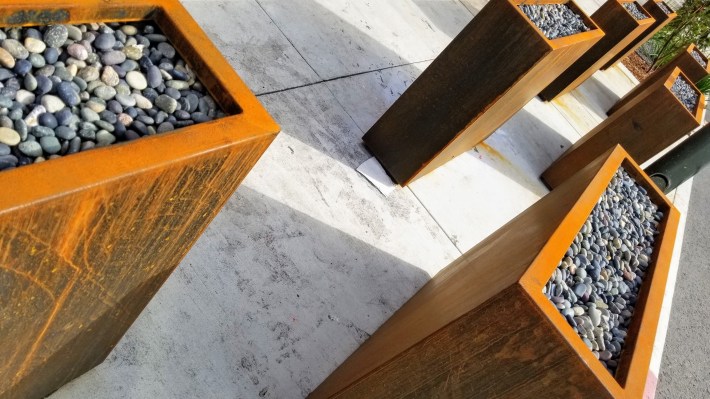
[dropcap size=big]I[/dropcap]n LA, the homeless are shuffled from one corner to the next, as the city struggles to meet goals for creating permanent housing and law enforcement continues to target the homeless.
According to Guerra, all of the subjects living at the corner of Lillian Way and Warring, “used to be on Cahuenga and Eleanor and the Gower corridor south of Santa Monica.”
According to the LAPD’s 4th quarter report on homelessness, Hollywood had the second most misdemeanor open charge and warranted arrests with 168, following the central area with 203. While the homeless community saw an overall decrease in release from custody citations last quarter, there was still an 89 percent increase in narcotics release from custody arrests and a 29 percent increase in personal service citations for walking outside of a crosswalk.
Being homeless is still criminalized in Los Angeles even when the city itself recommends that the homeless community face less scrutiny from law enforcement.
“Fines and citations, encampment clearings, and other municipal practices and policies that disrupt and displace people create additional barriers and setbacks for people experiencing homelessness, making it more likely that people will remain homeless even longer,” according to a February 2019 report by the Los Angeles Homeless Services Authority. Instead, LAHSA recommends that all members of the community work together “to mitigate the hazards facing our unsheltered neighbors.”
This conflict between landowners and the homeless is just one example of why our unhoused population has been growing for decades. There’s a disconnect between the city, landowners, general public and the homeless. While some people are trying to end homelessness, others are trying to move it to the next corner.
RELATED: Homeless and Missing ~ How Privacy Rules Can Slow Searches For People Lost on the Streets
RELATED: ‘The Dead Have Names’ ~ Vigil Pays Homage to Homeless Who Died on L.A. Streets
